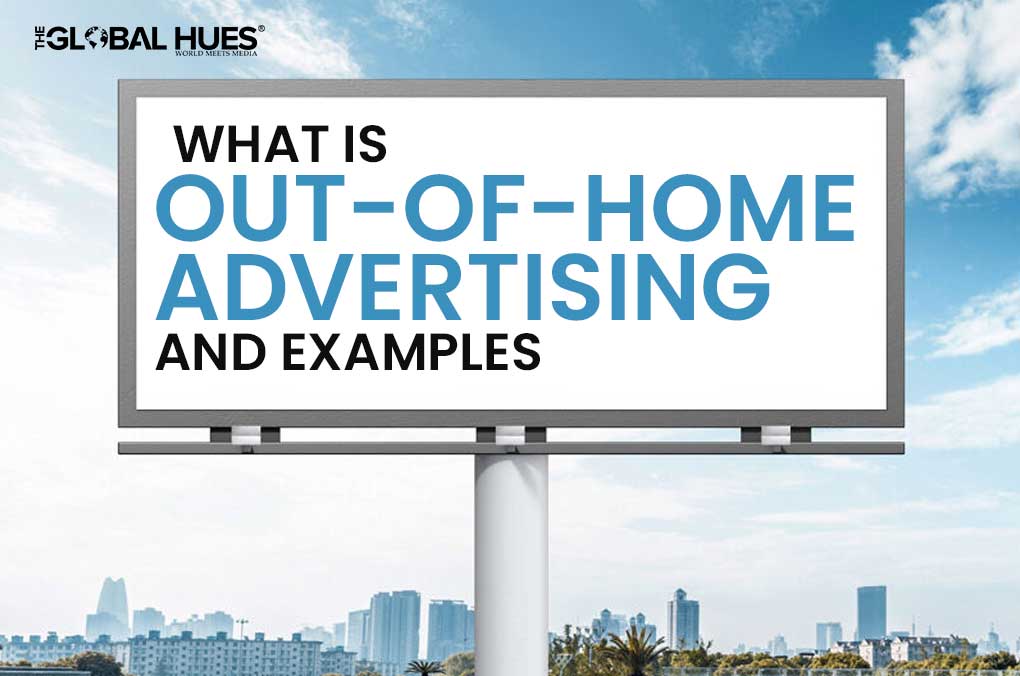Out-of-home (OOH) advertising is one of the oldest and most resilient advertising methods. Moreover, it seems to be growing in popularity today. For example, tech companies like Google and Facebook have turned to out-of-home advertising to boost their online advertising efforts. It comes in handy when they want to market a new feature or product, targeting specific demographics. Data shows that the OOH market was worth about $6.13 million in 2020. Forecasts show that it’ll reach $15.03 million by 2026.
So, what exactly is out-of-home advertising, and what are some of its examples? This post is your guide to the concept of OOH advertising.
Out of Home Advertising: Definition
Out-of-home advertising is any visual advertising media that businesses use to market themselves outside consumers’ homes. In other words, OOH is an advertisement that reaches an audience when they’re away from home. The category is expansive, with some of the world’s most famous OOH advertisers being Amazon, McDonald’s, Apple, Coca-Cola, and HBO.
Media marketers who have integrated OOH advertising into their multi-channel campaigns realize that it boosts their other channels too. Research shows that consumers are 48% more likely to click on a mobile ad if they had seen it on an OOH ad first. Another 46% of consumers are likely to search for the brand or product advertised on OOH. Probably that explains why out-of-home advertising is blowing up now. Furthermore, it delivers these benefits to marketers:
- An excellent alternative to digital marketing that is sometimes marred by ad blockers
- Increased brand visibility
- OOH offers brighter colors, more movement, and a lot more convenience
- Guaranteed growth of the market, for example, OOH is growing at approximately 16% annually
Moreover, consumers rate outdoor advertising as a more trustworthy form of marketing. Because OOH uses anonymized data, the format is friendlier and a safer option to reach the target market.
Examples of Out of Home Advertising
As out-of-home advertising evolves, marketers embrace various OOH formats to pass their marketing messages. Therefore, it’s not uncommon to come across OOH ads in the form of the following:
1. Billboard Advertising
Billboards are among the most common mediums of OOH advertising. They mainly consist of large print ads mounted on elevated boards on high-traffic areas like highways, malls, shopping complexes, and stadiums. Consequently, billboard ads provide an effective way to build a brand’s awareness among a large audience.
Billboards are available in many types, shapes, and sizes, falling into the following categories:
- Static or stationary billboards, typical on roadsides
- Mobile billboards generally transported on the back of a truck or bus
- Outdoor digital signage displays or digital billboards. These are computer-controlled and use digital screens to showcase digital ads and dynamic content in real-time.
2. Transit OOH Ads
Transit advertising is common in the public transportation sector. It’s mostly placed on top of buses for people to see them from buildings and office tops. Non-digital OOH transit ads include ads:
- Placed on buses, displayed both on the interior and exterior of a bus
- Wrapped around taxis, including partial and full wraps
- Displayed on subways to provide an effective strategy for brand awareness right where commuters are when they need some distraction
Vehicular advertising is economical and efficient.
3. Street Furniture
Some marketers are taking non-digital out-of-home advertising to the next level through street furniture ads. This form of OOH advertising entails placing ads on bus shelters, sidewalks, benches, kiosks, and similar furniture or equipment.
4. Point-of-Sale Advertising
Also known as point-of-purchase advertising, point-of-sale ads include communication materials that draw consumers’ attention as they make a purchase. The primary purpose of POS ads is to nudge buyers to make last-minute purchases. For example, a retailer can display complementary products like earphones or phone covers at a mobile store for POS advertising.
5. Retail Advertising
Another example of an OOH advertising campaign in retail marketing. In this format, retailers use store advertising to create awareness and interest in their brand or products to generate more sales. Eventually, they effectively influence customers” opinions to take a specific action, for example, buying a complimentary product from the store. An all-time example is the “buy one get one free” advertising strategy.
Retail advertising includes:
- Mall media where marketers place ads on banners, roofs, or window films
- Elevator ads where banners and posters are positioned on elevator walls
- Floor graphics in gyms, supermarkets, malls, or grocery stores
Leverage OOH Advertising to Increase Your Marketing ROI
Companies that use out-of-home advertising campaigns know that it allows them to reach their target audience at a unique point in their daily schedule. Out-of-home ads allow for targeted advertising, specifically when the audience has nothing else on their minds. The ads increase the chances of engaging with your brand to get the follow-through you need. Try the above OOH media and see your ROI improve.
Must Read:
- TOP 10 RICHEST BILLIONAIRES IN THE WORLD 2022
- Top 10 Indian Origin CEOs Leading International Companies
- TOP 10 IN-DEMAND SKILLS FOR 2022
- SUCCESS STORY OF TIM COOK: A MAN WITH A VISION
- HIGHEST-PAID CEOs IN THE WORLD
- Success Story Of Mukesh Ambani
- TOP 10 NEWSPAPERS IN THE WORLD 2022
- Elon Musk: Biography Of A Self-Made Entrepreneur And Billionaire
- 10 GADGETS TO KEEP YOU COOL THIS SUMMER
- 7 R’s Of Waste Management – Steps To Sustainability
- What Are The 5 Must Watch Netflix Thrillers




